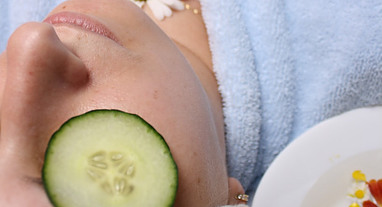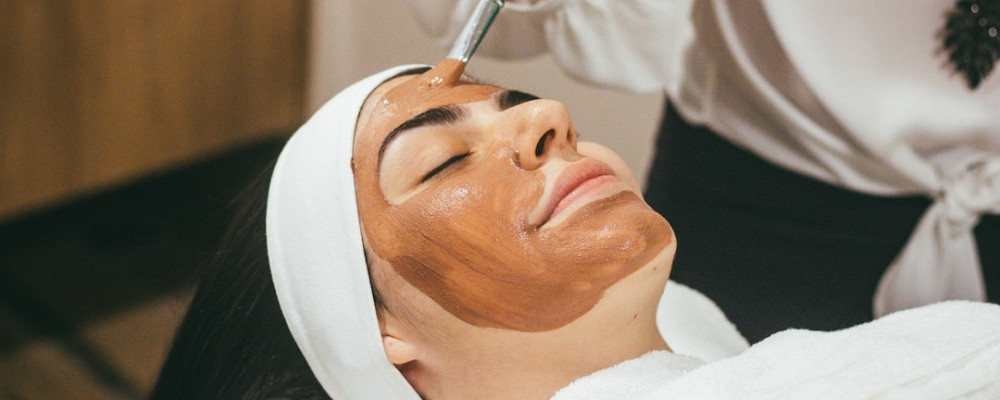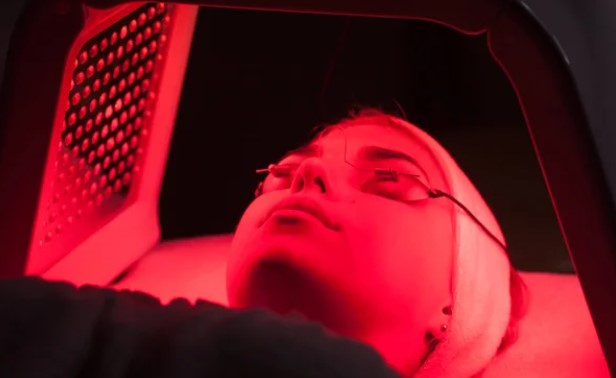
How Does Red Light Therapy Work For Wrinkles?
 In the quest for youthful and radiant skin, many people turn to the latest advancements in skincare technology. Light therapy for wrinkles is an innovation that has gained a massive following over the years. This non-invasive and increasingly accessible treatment uses specific light wavelengths to combat signs of aging, reduce wrinkles, and improve overall skin health.
In the quest for youthful and radiant skin, many people turn to the latest advancements in skincare technology. Light therapy for wrinkles is an innovation that has gained a massive following over the years. This non-invasive and increasingly accessible treatment uses specific light wavelengths to combat signs of aging, reduce wrinkles, and improve overall skin health.
So, how does red light therapy work for wrinkles?
In this article, we will explore the origins and mechanisms of light therapy, focusing on its effectiveness in improving aging signs. Specifically, we will uncover the power of red light therapy and its incredible benefits for the skin. Let’s dive into the world of light therapy and its transformative effects on our skin’s appearance.
The Roots of Light Therapy…
The use of light as a therapeutic tool dates back thousands of years. Ancient civilizations, such as the Egyptians and Greeks, were known to utilize sunlight for medicinal purposes. However, in the late 19th and early 20th centuries, scientists began to explore the potential of artificial light sources for therapeutic applications.
In the 1960s, NASA further advanced light therapy research by investigating its effects on plant growth and wound healing. This research revealed that certain light wavelengths had a significant impact on cell growth and regeneration. Over the years, as technology progressed, light therapy found its way into various medical fields, including dermatology, becoming a valuable tool in pursuing healthier, younger-looking skin.
Understanding Light Wavelengths & Your Skin
Light therapy, also known as phototherapy or low-level light therapy (LLLT), employs different wavelengths of light to penetrate the skin at varying depths. The most commonly used wavelengths fall within the red and near-infrared spectrum, ranging from approximately 600 to 1300 nanometers (nm). These particular wavelengths have been proven to be most effective in stimulating cellular activity within the skin’s layers.
Skin is made up of cells; when light touches the skin, it goes into the energy centers of our cells, called mitochondria. This makes the cells produce more energy molecules called adenosine triphosphate (ATP). Because of this, red light therapy helps special cells in the skin, called fibroblasts, make more collagen and elastin, which are essential proteins for keeping the skin elastic and firm.
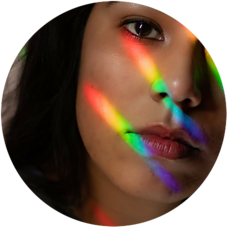
Different Light Colors for Different Needs
In the realm of light therapy, each color wavelength provides distinct advantages to our skin by engaging with specific cellular processes. Although this article focuses primarily on the benefits of the red light spectrum, it is essential to acknowledge the significance of other light wavelengths as they, too, offer beneficial effects for the skin. Depending on individual needs and skin concerns, incorporating different light colors into light therapy can be a valuable approach to achieving optimal skincare results.
Red Light (620-700 nm)
Red light therapy is renowned for its skin rejuvenation properties. It stimulates the production of collagen and elastin, essential proteins that provide structural support to the skin. Collagen helps to maintain skin elasticity, while elastin ensures that the skin can return to its original shape after being stretched. As a result, red light therapy is excellent for minimizing fine lines, wrinkles, and crow’s feet.
Near-Infrared Light (800-1300 nm)
Near-infrared light penetrates even deeper into the skin, reaching the subcutaneous layer. This light therapy enhances blood circulation and cellular metabolism, promoting faster healing and tissue repair. It can also help improve skin tone and reduce the appearance of deeper wrinkles and scars.
Blue Light Therapy (400-495 nm)
Blue light therapy is particularly effective in managing acne-prone skin. The blue light targets and destroys the bacteria responsible for causing acne, specifically Propionibacterium acnes. By reducing the number of acne-causing bacteria on the skin, blue light therapy helps minimize breakouts and inflammation.
Yellow Light Therapy (570-590 nm)
Yellow light therapy is known for its skin rejuvenating properties. It is particularly effective in addressing various skin conditions characterized by redness. Its unique properties make it an ideal choice for targeted treatments to soothe and improve the appearance of redness-related skin issues.
Green Light Therapy (525-550 nm)
Green light therapy targets melanin-producing cells, helping to reduce the appearance of hyperpigmentation. Green light has a calming effect on the skin, making it suitable for individuals with sensitive or irritated skin. It can help balance oil production and reduce redness.
Purple Light Therapy (380-450 nm)
Purple light therapy combines the benefits of both blue and red light. It can help manage acne by destroying acne-causing bacteria while stimulating collagen production to reduce the signs of aging.
Benefits of Light Therapy for the Skin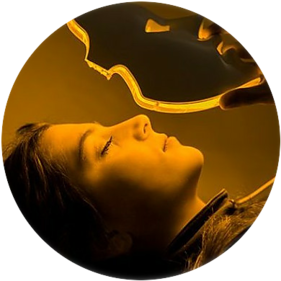
Wrinkle Reduction – By stimulating collagen and elastin production, light therapy diminishes the appearance of wrinkles, fine lines, and other signs of aging, leading to smoother and more youthful-looking skin.
Enhanced Skin Texture – Light therapy can improve skin texture by promoting cell turnover and increasing the skin’s moisture retention capacity.
Acne Management – Certain light wavelengths, such as blue light, have antimicrobial properties that can effectively combat acne-causing bacteria without harsh side effects.
Reduced Sun Damage – Light therapy can help fade sunspots and hyperpigmentation caused by prolonged sun exposure, creating a more even skin tone.
Speedier Healing – Near-infrared light aids in tissue repair, making it beneficial for post-surgery recovery or for individuals with wounds and scars.
Promotes Circulation – The improved blood flow from red light therapy helps deliver essential nutrients and oxygen to skin cells, supporting overall skin health and a radiant complexion.
Reduces Inflammation – Red light therapy can have anti-inflammatory effects, soothing the skin and reducing redness and swelling, making it useful for individuals with sensitive or acne-prone skin.
Non-Invasive and Safe – Light therapy is a non-invasive procedure with minimal downtime, making it a safe and viable option for individuals who prefer to avoid more invasive cosmetic procedures.
Professional or At-Home Treatment
In today’s world, you can discover a wide range of less invasive alternatives to professional dermatologist or esthetician treatments, including at-home light therapy options. While it’s true that at-home treatments may not be as potent as their professional counterparts, they still offer effective results. Many light therapy tools, such as masks and panels, are available on the market, providing users with various options to incorporate light therapy into their skincare routines conveniently and comfortably. If you do choose an at-home treatment, there are a few things to consider when buying:
Click here to see a very easy to use light therapy face mask with all the light options available
Irradiance – This measures the amount of energy the device delivers to your body over time. Higher irradiance can lead to better results in less time.
Frequency – Red light therapy devices typically use frequencies ranging from 633 nm (deep red) to 850 nm (near-infrared).
Quality of the Product – Ensure the device meets safety standards and certifications. Be cautious of cheap or unsafe products in the market.
Customer Feedback – Check customer reviews for real-life experiences with the device and personable feedback (so you know it’s not a robot review)
When administered by a licensed professional or used responsibly at home, light therapy can be a valuable addition to a skincare routine. However, it’s essential to consult with a dermatologist or skin specialist before incorporating light therapy into your skincare regimen, especially if you have any underlying skin conditions or concerns.

Parting Words…
In summary, light therapy is a gentle and effective way to give our skin a boost, encouraging it to produce more of the essential proteins that keep our skin looking fresh and youthful. It’s like giving our skin a helping hand in the fight against wrinkles and other signs of aging, making it a popular choice for people seeking a non-surgical way to improve their skin’s appearance.
As always, I’d love to hear from you! Feel free to drop me a comment below or message me!!
Best Regards,
Maricella


